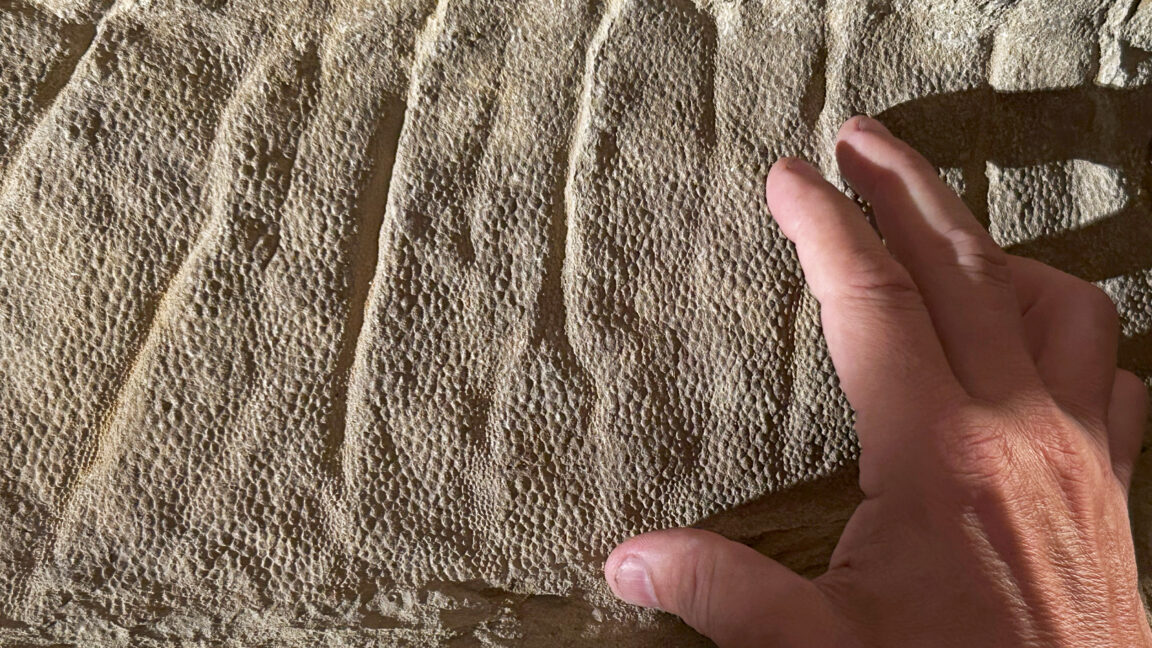
"Edmontosaurus annectens, a large herbivore duck-billed dinosaur that lived toward the end of the Cretaceous period, was discovered back in 1908 in east-central Wyoming by C.H. Sternberg, a fossil collector. The skeleton, later housed at the American Museum of Natural History in New York and nicknamed the "AMNH mummy," was covered by scaly skin imprinted in the surrounding sediment that gave us the first approximate idea of what the animal looked like."
"More than a century later, a team of paleontologists led by Paul C. Sereno, a professor of organismal biology at the University of Chicago, got back to the same exact place where Sternberg dug up the first Edmontosaurus specimen. The researchers found two more Edmontosaurus mummies with all fleshy external anatomy imprinted in a sub-millimeter layer of clay. For the first time, we uncovered an accurate image of what Edmontosaurus really looked like, down to the tiniest details, like the size"
Edmontosaurus annectens, a large duck-billed herbivore from the end of the Cretaceous, was first uncovered in 1908 in east-central Wyoming and preserved with scaly skin impressions. That early specimen, later housed at the American Museum of Natural History and nicknamed the “AMNH mummy,” provided the first approximate external appearance. Over a century later, paleontologists returned to the original site and recovered two additional mummies with fleshy external anatomy recorded in a sub-millimeter clay layer. The new material documents scale size and the arrangement of tail spikes, corrects earlier restorations that misinterpreted crest and tail anatomy, and refines visual reconstructions.
Read at Ars Technica
Unable to calculate read time
Collection
[
|
...
]